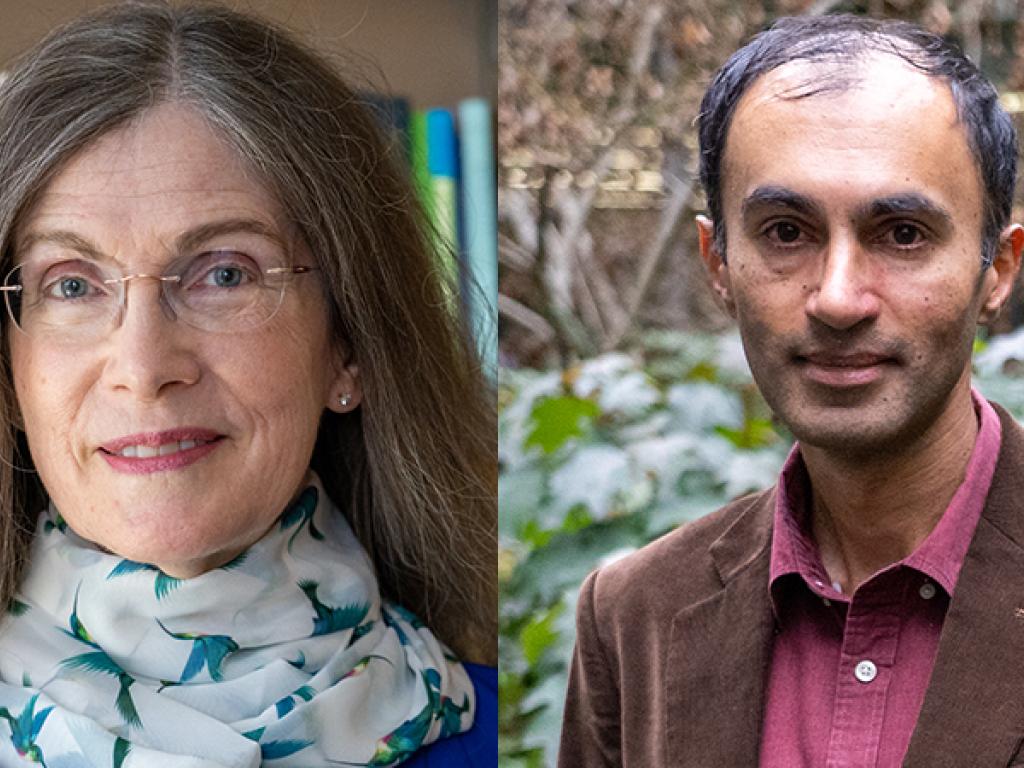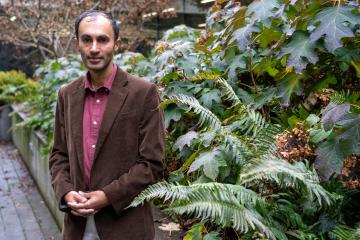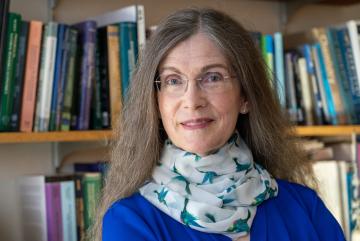
Two University of Oregon faculty members have been named 2022 fellows by the American Association for the Advancement of Science (AAAS), joining 508 other newly elected members whose work has distinguished them in the science community and beyond.
This year’s fellows and their areas of research are Raghuveer Parthasarathy, physics, and Trudy Ann Cameron, economics.
“Election to AAAS is a recognition of a scholar’s significant research impact. I commend Professors Parthasarathy and Cameron for their contributions not only to their fields of study, but to the greater public through science communication and policy advising,” said Anshuman “AR” Razdan, vice president for research and innovation at the UO.
So Simple a Beginning
Raghuveer Parthasarathy, a professor in the Department of Physics, is a biophysicist who explores the physical structure of living things and how the laws and principles of physics govern how life works. Parthasarathy’s current research focuses on the organization of the zebrafish gut microbiome to answer fundamental questions about how gut microbes interact with each other and their host to shape an ecosystem that influences the overall health of the organism. Parthasarathy’s lab uses microscopy and 3D imaging to understand how perturbations to the microbiome from sources such as the introduction of new microbial species or antibiotics affect the system’s structure.

“When we started imaging gut microbes, no one had done it before and so we had no idea what to expect,” Parthasarathy said. “We’ve found that some species of bacteria are very motile, swimming and zipping around in the gut. However, most species aggregate and form dense three-dimensional colonies.”
Parthasarathy was cited by the organization for “fundamental insights into the physical basis for biological self-organization, and for effectively transmitting the principles of molecular, cellular and organismal biophysics to the general public.”
Parthasarathy wrote and illustrated a popular-science book on biophysics, So Simple a Beginning: How Four Physical Principles Shape Our Living World, published in 2022.
“Living things obey the laws of physics. We’ve figured out how a snowflake crystal grows and what makes Jell-O wiggly. These are questions of how materials behave,” Parthasarathy said. “Of bacterial aggregates in the gut you can ask the same questions. How are new colonies initiated and how do they grow? How do bacterial interactions with each other affect their size and shape, and how do their size and shape affect interactions? If you ingest a new microbial species, does it colonize the gut and on what time scale?
“I am drawn toward the merger of the beauty of the living world and predictive nature of physics,” Parthasarathy said of his passion for where biology and physics intersect. “There are a lot of unanswered questions. The existence of unanswered questions is exciting.”
Valuing the Invaluable
Trudy Ann Cameron, an emerita professor in the Department of Economics, is a pioneer of stated preference methods in environmental economics. These methods measure how much people are willing to give up to protect environmental goods. Some examples include environmental impacts on human health, biodiversity in wild birds, or the quality of recreational fishing opportunities. For benefit-cost analysis of environmental regulations, stated preference methods may be needed to capture the full range of benefits people derive from ecosystem services. Many of these services are fundamentally “non-market” goods, in that they cannot be valued simply based on their market prices. Throughout her career, Cameron has worked to develop improved statistical methods to identify the determinants of people’s environmental policy preferences.

Cameron was cited by AAAS for her “contributions to environmental and resource economics and leadership in policy advising for environmental protections.”
In 2022, Cameron was honored by the Association of Environmental and Resource Economists with a “Publication of Enduring Quality” award for her paper “A new paradigm for valuing non-market goods using referendum data: maximum likelihood estimation by censored logistic regression,” published in the Journal of Environmental Economics and Management in 1988.
Cameron has served in a policy advising capacity for the Science Advisory Board of the U.S. Environmental Protection Agency, both on the Environmental Economics Advisory Committee and as chair of the U.S. EPA’s Advisory Council on Clean Air Compliance Analysis. The Council’s role was to monitor the EPA’s internal benefit-cost analysis of the Clean Air Act.
Cameron is currently using stated preference methods called “choice experiments” to explore people’s preferences for different types of carbon-pricing programs — both cap-and-trade proposals at the state level, and internal carbon pricing programs for institutions — as a function of a variety of possible features for each type of program. In both cases, different groups of people clearly care differently about the distributional consequences of these programs.
“My mission has been to find better ways to put dollar values on previously unmeasured benefits from environmental policies or regulations, so they can be weighed against the corresponding costs, where benefits and costs often accrue to different groups in society,” Cameron said.
